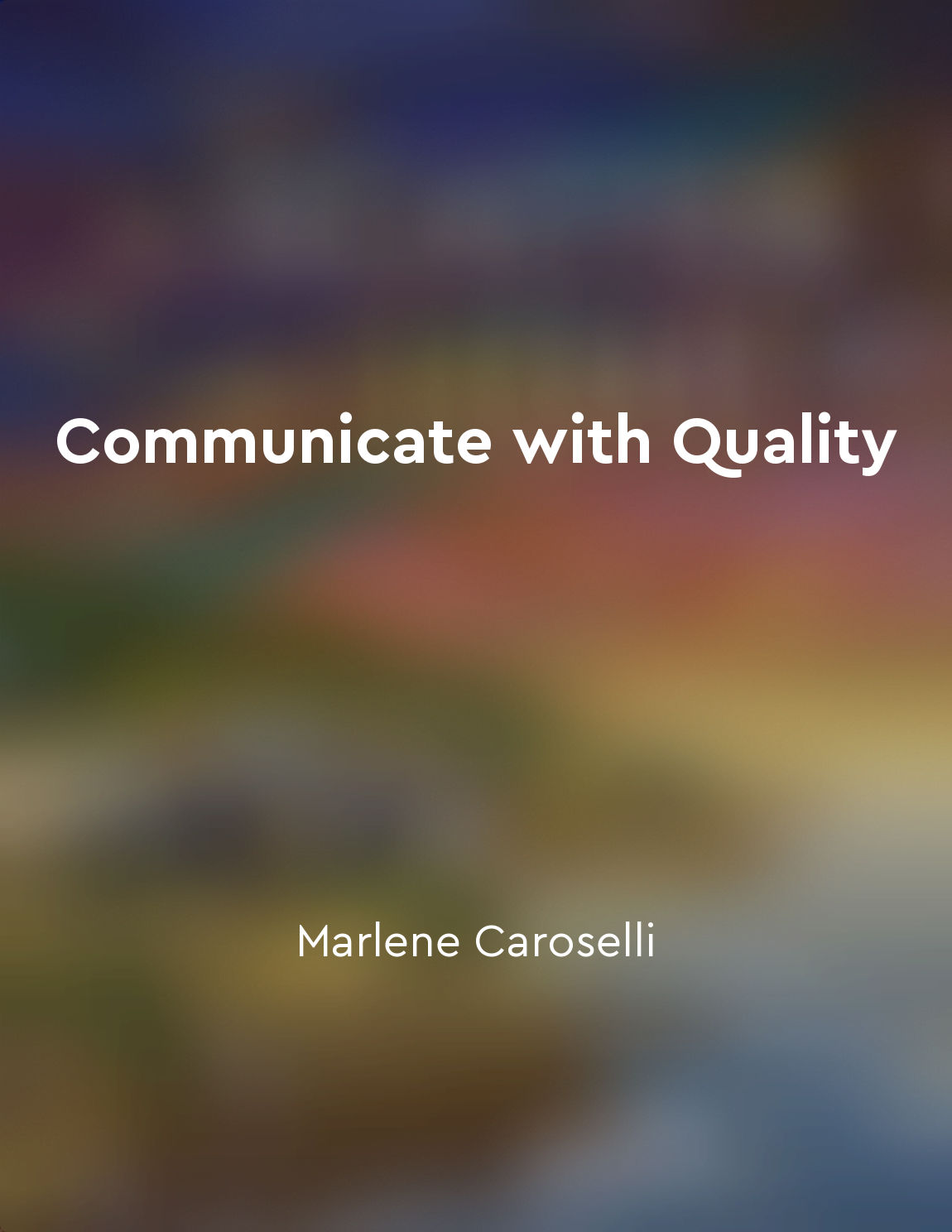Audio available in app
presentations from "summary" of Presentation Zen by Garr Reynolds
In order to truly connect with your audience and make an impact with your message, it is crucial to understand the concept of presentations. Presentations are not just a series of slides filled with text and bullet points; they are a powerful tool for communication that can help you share your ideas in a compelling and engaging way. The key to creating effective presentations is simplicity. By keeping your slides clean and uncluttered, you can focus your audience's attention on the main points you are trying to convey. Avoid overwhelming your audience with too much information on a single slide, and instead, break up your content into digestible chunks that are easy to understand. Clarity and coherence are also essential components of a successful presentation. Make sure that your message is clear and easy to follow, with a logical flow that guides your audience through your ideas. Use transition words and phrases to help your audience move seamlessly from one point to the next, creating a cohesive narrative that keeps them engaged. When creating your presentation, think carefully about the sequencing of your content. Start with an attention-grabbing introduction that sets the stage for your message, then move on to the main body of your presentation where you can delve deeper into your ideas. Finally, conclude with a strong ending that reinforces your key points and leaves a lasting impression on your audience. Consistency in tone and style is also important when creating presentations. Make sure that your slides are visually cohesive and that your language and messaging are consistent throughout. This will help create a sense of professionalism and credibility, and will make your presentation more engaging and impactful. Grammar and syntax are crucial elements of effective communication, so be sure to proofread your presentation carefully to catch any errors or inconsistencies. Additionally, make sure that you have a good understanding of the context in which you are presenting, so that you can tailor your message to your audience and make it as relevant and engaging as possible. By focusing on these key characteristics of effective presentations, you can create a compelling and engaging message that resonates with your audience and leaves a lasting impact. So, the next time you are preparing to give a presentation, remember to keep it simple, clear, and coherent, and to use transition words and phrases to guide your audience through your ideas. With a consistent tone and style, careful attention to grammar and syntax, and a deep understanding of your audience, you can create a presentation that truly connects and inspires.Similar Posts
Handle questions and feedback gracefully
When faced with questions or feedback, it is important to respond in a composed and respectful manner. This means maintaining a...
Use triggers to keep your message top of mind
Triggers are reminders that prompt people to think about a particular idea or product. They are stimuli that bring a concept to...

Simplify your decisionmaking process for better outcomes
The key to making better decisions is simplifying the decision-making process. When we are faced with complex choices, we can e...
Create a sense of urgency to prompt action
To get people to act quickly, we can create a sense of urgency. Urgency is a key ingredient in making an idea stick. When peopl...
Seek feedback for improvement
Feedback is a powerful tool for growth and development. It provides valuable insights into our strengths and weaknesses, helpin...
Analysis of enduring long works
When it comes to analyzing enduring long works, one must delve deep into the intricate details and themes that make these works...
Create a sense of belonging
Creating a sense of belonging is crucial when trying to drive change. People are more likely to embrace change when they feel l...

Consider cultural differences in communication styles
Understanding cultural differences in communication styles is a crucial aspect of effective communication. Different cultures h...
Foster a culture of continuous learning and growth
To create an environment where continuous learning and growth thrive, technical leaders must prioritize the development of thei...
Continuous learning leads to growth
Continuous learning is essential for personal and professional growth. By committing to ongoing education and self-improvement,...

